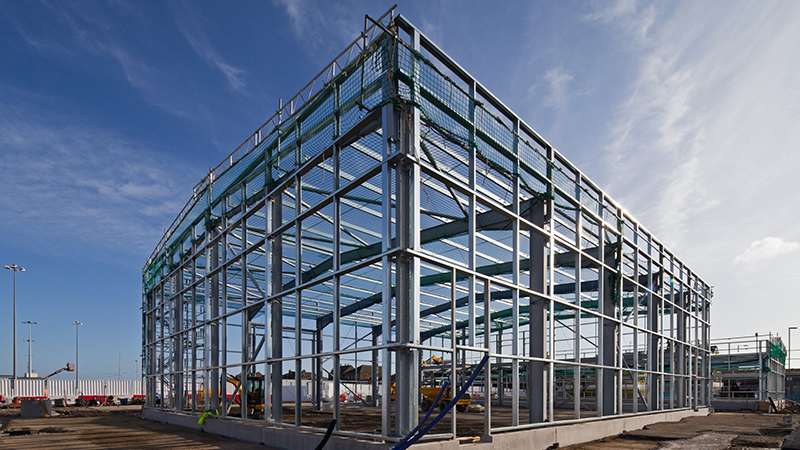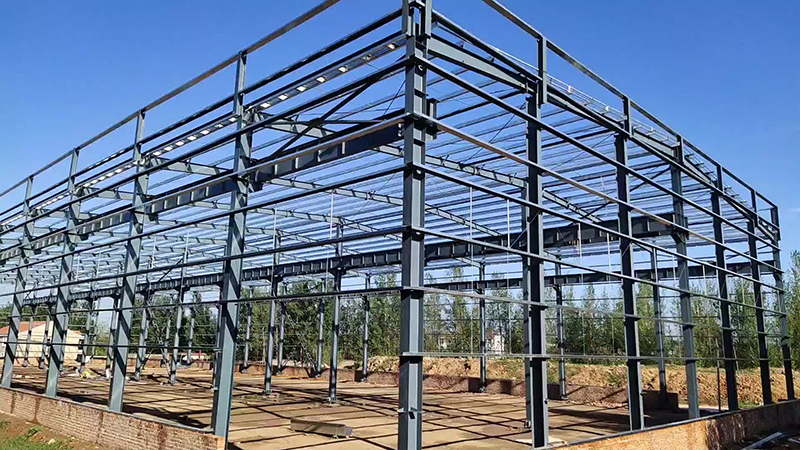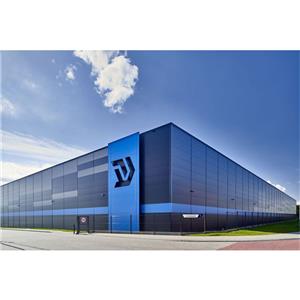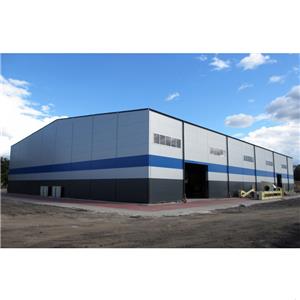Precautions for steel structure engineering
(1) Fabrication of steel members
Steel structure fabrication includes deepening, setting out, marking, cutting, welding, correction, and other links. The anti-slip coefficient of the friction surface after high-strength bolt treatment shall meet the requirements.
Shot blasting and spraying shall be carried out after the production is completed and the quality is qualified. The level of shot blasting and coating thickness must also meet the requirements of the drawing. Generally, 30~50mm shall be reserved at the installation weld for the time being.
(2) Steel structure welding
Welders must pass the examination and obtain the certificate of qualification, and must perform welding within the scope of their qualified items and approval. Steel seal shall be made after welding.
The welding material shall match the base metal, and appropriate welding wire and flux shall be selected. According to the design requirements of the drawing, the internal defects of the primary and secondary welds with full penetration shall be inspected by ultrasonic flaw detection.

(3) Transportation of steel components
When transporting steel members, vehicles shall be selected according to the length and weight of the steel members, and overloading, over-length, and over-height are not allowed. It shall be ensured that the steel components will not deform on the vehicle and will not damage the coating as much as possible. If the coating is damaged during transportation or loading and unloading, it shall be repaired during installation.
(4) Steel structure site installation
Steel structure installation shall be carried out according to the construction organization’s design, and safety is the top priority of steel structure installation. The installation procedure must ensure the stability of the structure and not cause permanent deformation. When installing columns, the positioning axis of each column must be directly led up from the ground control axis. After the main components of steel structure such as columns, beams, and roof trusses are installed in place, they must be corrected and fixed immediately.

(5) Steel structure site installation
1) The fire resistance of the steel structure is poor. When the temperature reaches 550 ℃, the yield strength of steel will decrease to about 0.7 of the yield strength at normal temperature, and the structure will reach its strength design value and may be damaged.
During design, the building structure shall meet the requirements of corresponding fire protection standards according to the provisions of relevant fire protection codes. The temperature of the steel structure shall not exceed the critical temperature within the time required by the fire protection standard to ensure the normal bearing capacity of the structure.
2) Exposed steel structures may be seriously corroded by the atmosphere, especially polluted atmosphere, the most common is rust. Therefore, it is necessary to carry out anti-corrosion treatment on the surface of components to ensure the normal use of steel structures. The method of anti-corrosion treatment is determined according to the requirements of the surface conditions and service life of the components.




